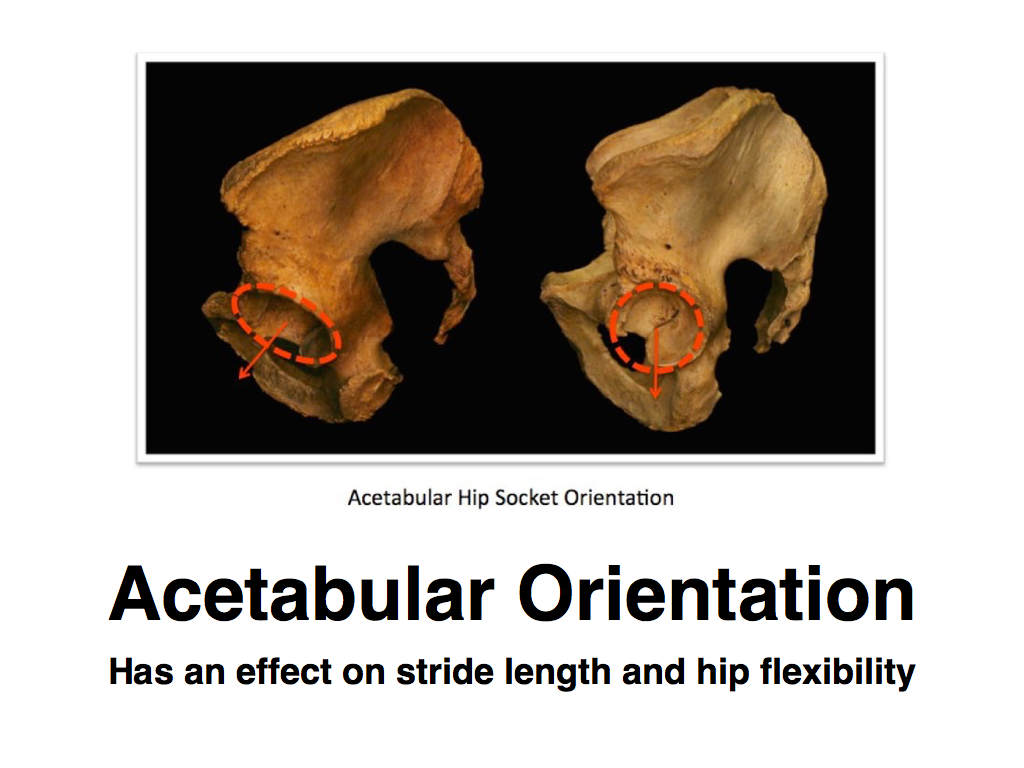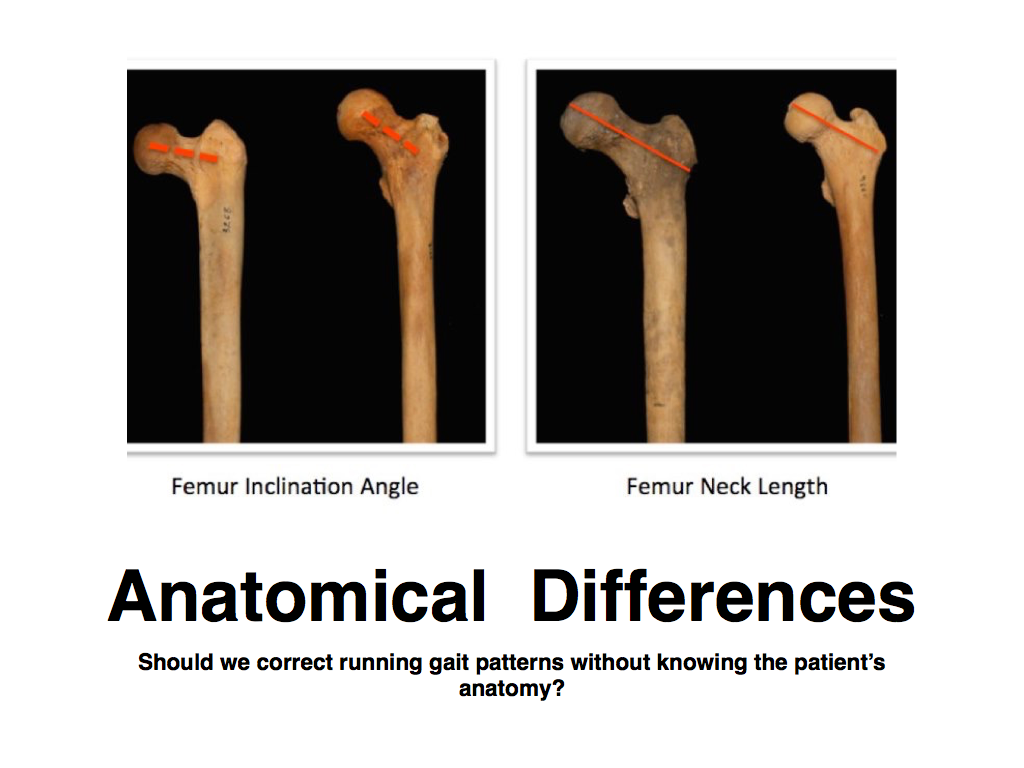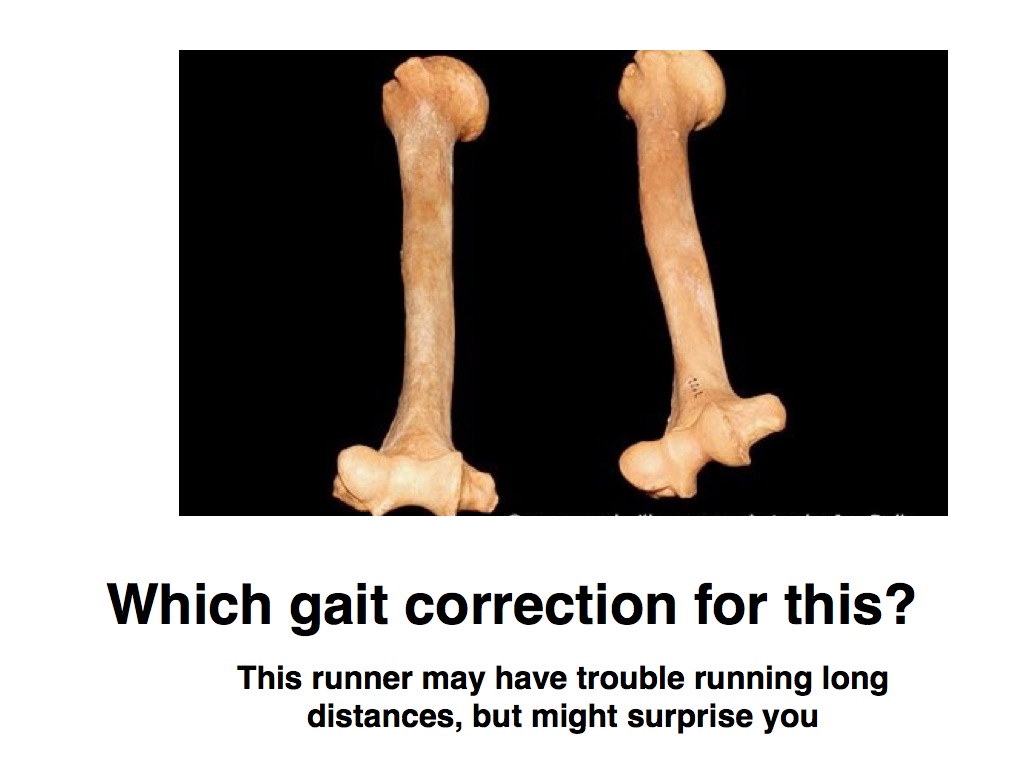By Dr. Steve Smith, Pacers Founder and Team Doc (Source)
There is a lot written about the best way to run. I’m talking about gait, form, forefoot vs. rearfoot, vs. midfoot. The question of how best to run pops up all the time. You hear it on the runs, in social media, coffee shops, and running stores. Gurus and pseudo experts flout their opinions. It’s a popular subject fueled by the sense that you are missing out on the best gait that will keep you from injury and help you with an elusive personal record (PR). It’s a perennial subject, loaded with bunk science and baloney.
Have you ever noticed how your gait changes when you speed up or slow down? Your gait, or form changes in relation to your speed. Run flat out and you will likely be on your toes with no possibility of your heels touching the ground. Run slow for a long time and you relax into a heel strike gait. From this we can deduce that your gait should change with your pace. Yet gait coaching does not take this into account. In fact, most gait coaching is done in the absence of any biomechanical knowledge, or scientific foundation. In other words, gait coaching is loaded with the opinions of the uninformed. To make the subject even more confusing, there is hot debate among so-called experts.
With this in mind, I advance my knowledge into this battleground for your belief.
Your gait was written into your DNA a long time ago. The runners with the best gait escaped predation and were successful hunters. Runners with poor gait got eaten or starved. Needless to say, they are not your ancestors, their kind did not make it into the future. Nature had a way of calculating how much to contract a specific group of muscles, just the right amount, and in just the right sequence, at just the right time. That calculation changes constantly depending on what your goals are. Running flat out in a burst of acceleration intended to escape a predator requires a different gait than traveling to distant hunting grounds. Old people run differently than young people. Delicate vs. robust physique, high mileage compared to low mileage runners, all with special gait requirements.
We are not all built to the same specifications. Your gait is unique to your body type, it’s like a fingerprint. People can recognize you by your gait. In order to understand just how different we are from one another, let’s take a look at some examples of just two different bones involved in your gait.
The first photo is a side view of the pelvis and shows where the hip socket is located.

Some hips are located to the rear or posterior of the body and some are oriented to the front, or anterior. Some hips are better suited for forefoot leg swing, meaning you are best suited to heel strike. Some hips are better suited for the leg to swing backward and strike on the mid or forefoot. This photo also explains why some people can easily bend over and touch their toes and some people can only bend with their fingertips to the knees. Some people are said to be “tight” when they are merely built differently. We must also remember that “tight” muscles are more capable of absorbing shock and returning energy. Tight muscles, think gazelle or cheetah. Flexible, think chimpanzee, with a flat butt.
The next slide shows how some people are built with short or long femur heads, high angle, or shallow angle. These shapes make a difference in how your hip joint moves and how bow legged or knock kneed you are.

Some people have factory defects in their femur heads, causing a foot or knee to turn in or out at odd angles. These variations cannot be corrected. Training the runner to turn the foot or knee to conform to a “correct gait” will result in energy spent overworking muscles, likely resulting in injury.
Think about Geoffrey Mutai who set the world record in the 2011 Marathon at 2:03:02 with a crooked gait. Priscah Jeptoo, who has a right leg that whips like an eggbeater, yet managed to win the New York, Paris, Turin and London marathons among several other important races as well as the Olympic silver medal. And what about Usain Bolt, arguably the faster sprinter in history, has a grossly uneven stride, 1/2-inch shorter right leg than left leg and crooked spine.

If they would have coached the gait of these three extraordinary runners, they may never have made it to the starting line. They adapted. That program, the one that was developed all those millennia ago, knew exactly how to adapt to their unique asymmetry and optimize their performance. I have good news for you. You have that same program, and you too can adapt. You don’t need to do anything special to optimize your gait. Just run!
What about the runner who changes their gait and feels better? It feels different when you change the way you run. It feels interesting, maybe even better. It may feel better if you are injured to change your gait to avoid certain muscles in the mechanical movement sequence. When focusing on gait or running form for the first time it feels interesting. You may never have paid any attention to your gait and how it feels, so gait coaching is an interesting sensation. The question is, does it help? Some people would say yes, then change their gait, then revert to their default gait when they get tired. Then if they are injured believe it is a result of faulty gait.
There is an energy cost to changing your gait. You can be taught to prance on your mid-foot and avoid knee pain but there is an energy cost to lifting your knee to get that gait. That energy cost can be measured with a wearable blood oxygen saturation and pulse measurement device or “oximeter,” which gives you an approximation of what we call “running economy”. Running economy is a measurement of how much energy is used to propel you across a certain distance at a certain velocity.
Two running economy strategies that have received recent widespread attention are strength training and altitude training. Strength training allows the muscles to utilize more elastic energy and reduce the amount of energy wasted in braking forces. Given enough time, runners naturally gravitate toward a running style that maximizes economy. Conclusion: Run more miles.
“The best way to improve your gait and more importantly, running economy, is run more miles.”
The next best way to improve your gait is to get stronger. You can get stronger by running more. But your gait characteristics can degrade at the end of a race, if you have weak muscles. You can observe weakness in tired runners nearing the end of a hard race. Standing at the finish line and observe struggling runners will give you an appreciation of how different their gait looks when they are tired. Cheer for those runners and they are renewed, optimal gait blooms into a sprint to the finish line!
Strength:
When choosing strength exercises for runners they should mimic running biomechanics. Walking lunges, lunge matrix, gluteal strength, hip strength and core strength are appropriate. The muscles that make you uniquely human and give you the stability to stand upright are the gluteals. Without them you wouldn’t be upright. Look at monkeys’ glutes and you’ll see what I mean. Strong gluteal muscles are the key to avoiding injury. Your body moves in three distinct directions when you run, and your exercises should strengthen you in all three of these planes of motion. There are runners exercise videos on the Pacers YouTube channel that have a proven track record for rehabilitation and injury prevention. Just pick two or three of them and do them every day. Do them after you run because they can leave you tired and affect your performance.
Posture:
Running with your chest upright and chin up can help you to breathe a little easier. But remember, your gait calculator knows this, so don’t spend too much energy on it. Just make a mental note of it and if you have a rounded mid back, you can straighten up a bit. If you run flat out, you will not have to even think about it because your innate gait intelligence knows how to grab the maximum number of oxygen molecules.
Gait Change:
There are situations when a gait change is appropriate. If you are injured and must continue running, then there is a way to limit the amount of “ground reaction force.” Sore joints and injuries generally don’t mix well with high impact. The rate that you apply the load to your joints is called “impact load rate.” If you run fast, the rate of loading applied to your joints is much higher than when you run slow. Slowing down is a type of gait change. Another way to reduce load rate is to use a higher “cadence.” Cadence is merely the number of steps per minute. I have used “tap that tempo” but there are several other apps that have the same function. Generally,170-180 strides per minute will help reduce impact load rate. If you’re a tall or long-legged runner you could run with a cadence closer to 170 steps per minute. If you’re a short-legged runner you should aim for a cadence closer to 180 strides per minute. Very fast runners are closer to 190 steps per minute.
Running Quietly:
Have you ever run next to someone with a loud gait, one that can be heard slapping the ground? That sound you hear is caused by high load rate. There is a simple way to quiet and soften any gait. Go to a high school track, do mile or two warmups. During the run pay attention to the sound of your gait, time the sound of your foot falls to the feel of your feet and knees. Really pay attention to the feel. Now take off your shoes and socks. Run a lap and pay close attention to the sound of your footfalls. Pay attention to your barefoot gait, which is likely to be very different than your shoe gait. Don’t overdo this, keep it short. Now put your shoes on and mimic your barefoot gait for the next mile or two. This drill will teach you how to change your gait without the aid of any coaching. It is a highly instructive gait lesson. This may be the gait you are heading toward as you run longer and get stronger during your training. Remember this: Running barefoot causes you to protect your feet. Protecting your feet has an energy cost. Rarely will you ever see a runner run their best pace when they are barefoot.
We are a modern society. Like it or not, to survive in our society we must wear shoes. In the Hippie days there were signs in business establishments that said: “No shirt or no shoes means no service.” Constraints of modern society compel us to wear shoes. Running shoes brought us the greatest sport in humankind, Running.
You are uniquely you, always be you. Let’s see that gait that is truly yours!
Warmest Regards,
Dr. Steve Smith

